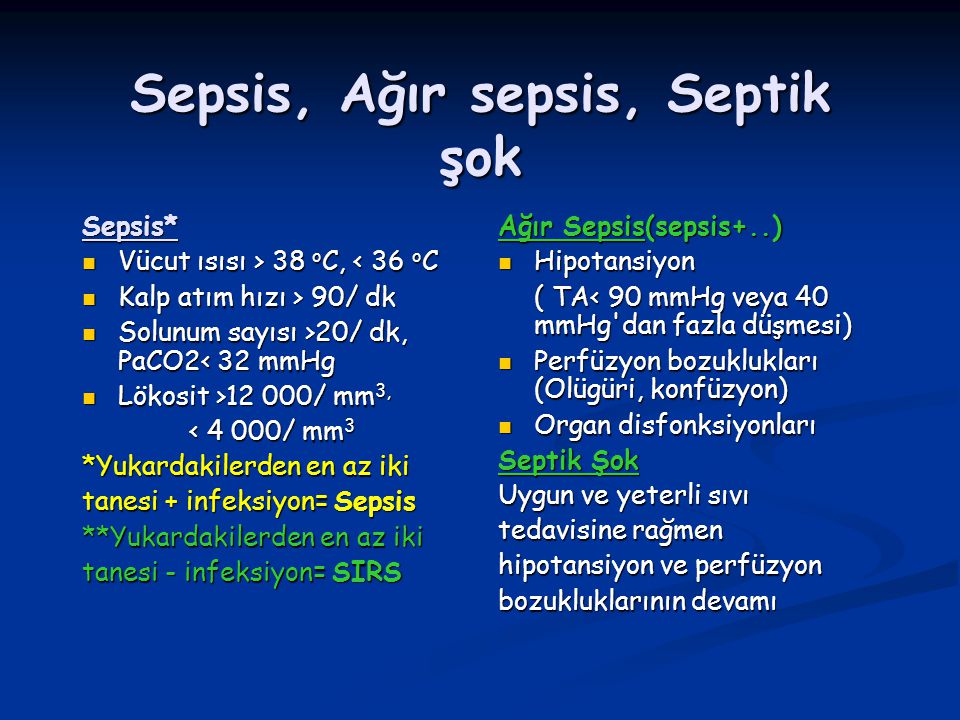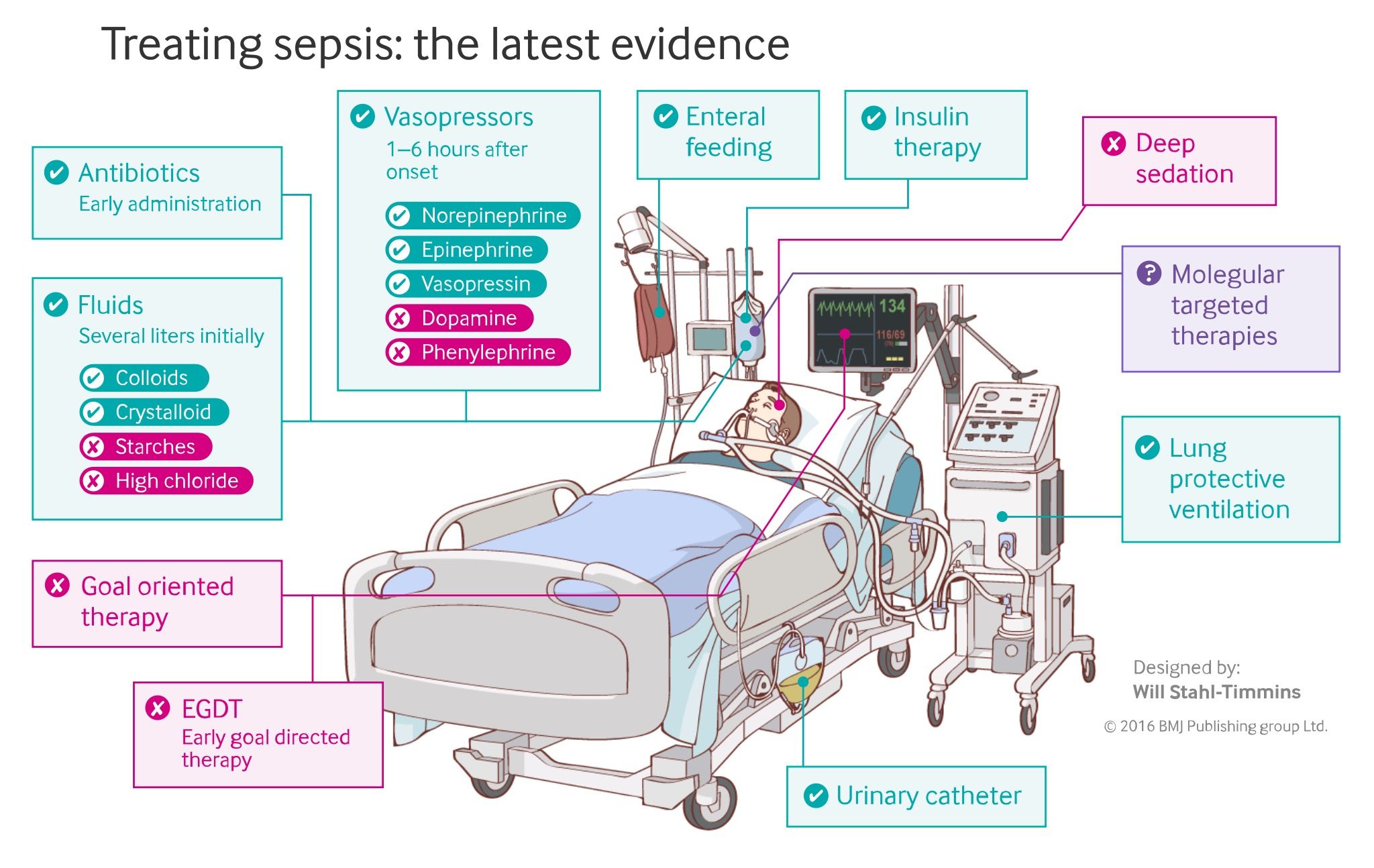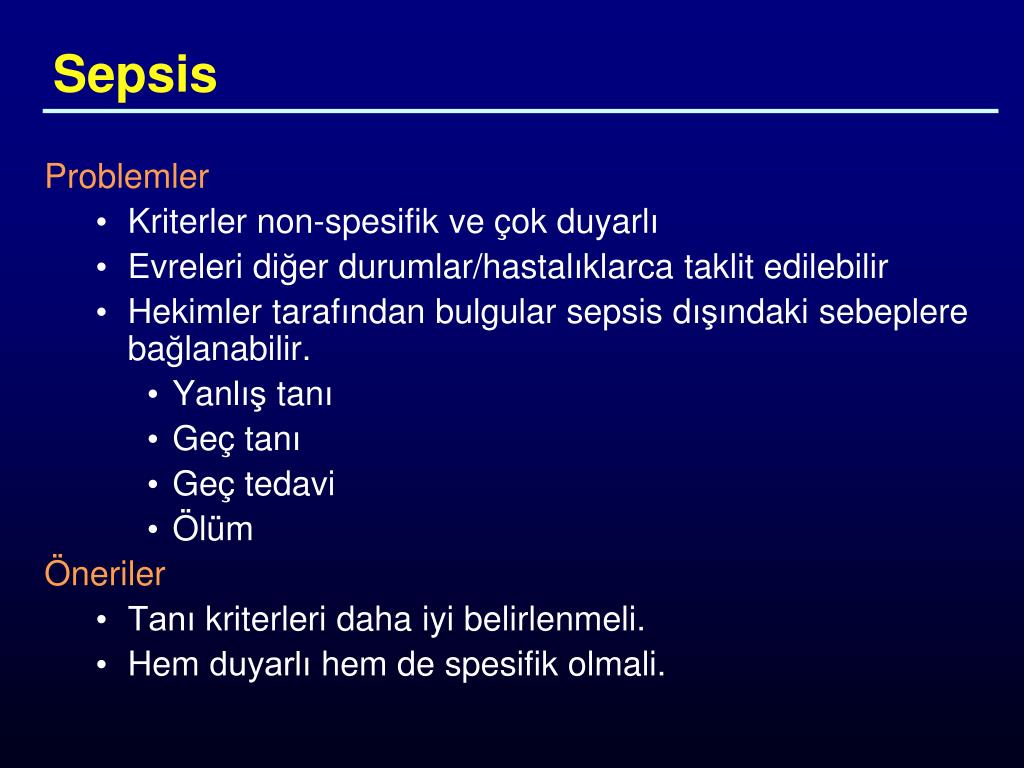What does it mean if a person is septic. Sepsis: Understanding the Life-Threatening Condition and Its Impact on Health
What is sepsis and how does it affect the body. Who is at risk of developing sepsis. How is sepsis diagnosed and treated. What are the long-term effects of sepsis on survivors. How can sepsis be prevented.
The Nature and Causes of Sepsis: A Comprehensive Overview
Sepsis is a potentially life-threatening condition that occurs when the body’s immune response to an infection or injury becomes dysregulated and begins to damage its own tissues and organs. This overwhelming immune reaction can lead to a cascade of events that, if left unchecked, may result in organ failure, septic shock, and death.
While bacterial infections are the most common trigger for sepsis, it can also be caused by viral infections (such as COVID-19 or influenza), fungal infections, or even non-infectious insults like traumatic injuries. The body’s immune system releases chemical mediators into the bloodstream to combat the threat, but in sepsis, this response becomes exaggerated and harmful.

The Pathophysiology of Sepsis
When sepsis occurs, the immune mediators trigger widespread inflammation, blood clotting, and increased permeability of blood vessels. This leads to impaired blood flow, depriving organs of essential nutrients and oxygen. As a result, organ damage can occur rapidly, potentially leading to multiple organ failure if not addressed promptly.
In some cases, particularly after antibiotic treatment has been initiated, the original cause of sepsis may no longer be detectable. This highlights the importance of early recognition and intervention in sepsis cases.
Identifying High-Risk Groups: Who is Most Susceptible to Sepsis?
While sepsis can affect anyone, certain groups are at higher risk of developing this condition. These include:
- Infants and young children
- Older adults
- People with underlying medical conditions (e.g., diabetes, AIDS, cancer, liver disease)
- Individuals who have recently undergone surgery or experienced traumatic injuries
- Those taking certain medications, particularly immunosuppressants
It’s important to note that there are also unknown biological factors that may influence an individual’s susceptibility to sepsis. Some people may decline rapidly when faced with sepsis, while others recover more quickly. Ongoing research aims to identify these individual factors to improve prevention and treatment strategies.

The Rising Incidence of Sepsis: A Growing Public Health Concern
According to the Centers for Disease Control and Prevention (CDC), at least 1.7 million adults in the United States develop sepsis each year, with nearly 270,000 deaths resulting from this condition. The number of sepsis cases has been increasing over time, likely due to several factors:
- Increased awareness and improved tracking of sepsis cases
- Longer life expectancy for people with chronic diseases
- The rise of antibiotic-resistant infections
- More frequent organ transplants and use of immunosuppressive medications
These factors contribute to a larger population of individuals who are vulnerable to sepsis, making it a significant public health concern.
Recognizing Sepsis: Key Symptoms and Diagnostic Challenges
Identifying sepsis early is crucial for effective treatment, but its symptoms can be challenging to recognize, especially in the initial stages. Common symptoms of sepsis include:
- Fever or chills
- Rapid breathing and increased heart rate
- Skin rash
- Confusion and disorientation
Many of these symptoms are also present in other conditions, which can make sepsis difficult to diagnose. Healthcare providers must be vigilant and consider sepsis as a possibility when these symptoms are present, particularly in high-risk individuals.

Diagnostic Approaches for Sepsis
To diagnose sepsis, doctors employ a combination of clinical assessment and diagnostic tests. These may include:
- Blood tests to check for the presence of bacteria or abnormal white blood cell counts
- Chest X-rays or CT scans to locate potential sources of infection
- Scoring systems to assess organ function and determine the extent of organ involvement
Early and accurate diagnosis is essential for initiating appropriate treatment and improving patient outcomes.
Treatment Strategies for Sepsis: A Race Against Time
Treating sepsis is a complex and time-sensitive process that typically takes place in hospital intensive care units. The primary goals of sepsis treatment are:
- Stopping the underlying infection
- Protecting vital organs
- Preventing a dangerous drop in blood pressure
To achieve these goals, healthcare providers employ a range of interventions:
- Administering broad-spectrum antibiotics to combat bacterial infections
- Providing intravenous fluids to maintain blood pressure and organ perfusion
- Supporting breathing with oxygen therapy or mechanical ventilation if necessary
- Initiating kidney dialysis in cases of renal failure
- Performing surgery to remove sources of infection when appropriate
Despite extensive research, there is currently no approved medication that specifically targets the dysregulated immune response seen in sepsis. Treatment approaches must be tailored to each patient’s unique presentation and immune status.

The Long-Term Impact of Sepsis: Challenges for Survivors
While the immediate goal of sepsis treatment is survival, those who recover from sepsis often face long-term health consequences. These can include:
- Cognitive impairment and memory problems
- Chronic pain and fatigue
- Muscle weakness and physical disabilities
- Increased risk of recurrent infections
- Psychological issues such as depression and post-traumatic stress disorder (PTSD)
These long-term effects, collectively known as post-sepsis syndrome, can significantly impact a survivor’s quality of life and ability to return to normal activities. Ongoing research aims to better understand and address these long-term consequences of sepsis.
Rehabilitation and Support for Sepsis Survivors
Recovery from sepsis often requires a multidisciplinary approach, involving various healthcare professionals such as physical therapists, occupational therapists, and mental health specialists. Support groups and patient education programs can also play a crucial role in helping survivors and their families navigate the challenges of post-sepsis life.

Preventing Sepsis: Strategies for Reducing Risk
While it’s not always possible to prevent sepsis, there are several strategies that can help reduce the risk of developing this life-threatening condition:
- Practicing good hygiene, including regular handwashing
- Staying up-to-date with vaccinations, particularly for pneumonia and influenza
- Managing chronic health conditions effectively
- Seeking prompt medical attention for infections or wounds that don’t seem to be healing
- Using antibiotics responsibly to help prevent the development of antibiotic-resistant bacteria
Healthcare providers also play a crucial role in sepsis prevention by implementing protocols for early recognition and treatment of infections, particularly in high-risk patients.
The Future of Sepsis Research: Promising Directions and Challenges
Ongoing research into sepsis aims to improve our understanding of the condition and develop more effective prevention and treatment strategies. Some promising areas of investigation include:

- Identifying biomarkers for early sepsis detection
- Developing targeted therapies to modulate the immune response in sepsis
- Exploring the role of the microbiome in sepsis susceptibility and outcomes
- Investigating genetic factors that influence sepsis risk and progression
- Improving long-term care and rehabilitation for sepsis survivors
Despite these promising avenues of research, sepsis remains a complex and challenging condition to study and treat. The heterogeneity of sepsis presentations and the rapid progression of the condition make it difficult to conduct large-scale clinical trials and develop universally effective treatments.
Advancing Sepsis Awareness and Education
In addition to scientific research, efforts to improve sepsis outcomes must include increased public awareness and education for healthcare providers. Recognizing the signs of sepsis early and seeking prompt medical attention can significantly improve patient outcomes.
Organizations such as the Sepsis Alliance and the Global Sepsis Alliance work to promote sepsis awareness, advocate for better policies, and support research efforts. These initiatives are crucial for reducing the global burden of sepsis and improving outcomes for those affected by this life-threatening condition.

As our understanding of sepsis continues to evolve, it is clear that a multifaceted approach involving research, clinical practice improvements, and public health initiatives will be necessary to address this significant health challenge. By combining efforts in prevention, early detection, and effective treatment, we can hope to reduce the impact of sepsis on individuals and healthcare systems worldwide.
National Institute ofGeneral Medical Sciences
En Español
Other Fact Sheets
PDF Version
What is sepsis?
Sepsis is a person’s overwhelming or impaired whole-body
immune response to an
insult—an infection or an injury to the body, or something else that provokes such a response. It’s a serious condition and a leading cause of death in hospitals. It’s also a main reason why people are readmitted to the hospital.
Sepsis occurs unpredictably and can progress rapidly. In severe cases, one or more
organ systems fail. In the worst cases, blood pressure drops, the heart weakens, and the patient spirals toward septic shock. Once this happens, multiple organs—lungs, kidneys, liver—may quickly fail, and the patient can die.
What causes sepsis?
Most sepsis is caused by
bacterial infections, but it can also be caused by
viral infections, such as COVID-19 or influenza; fungal infections; or noninfectious insults, such as traumatic injury. Normally, the body releases chemical or
protein immune mediators into the blood to combat the infection or insult. If unchecked, those immune mediators trigger widespread
inflammation, blood clots, and leaky blood vessels. As a result, blood flow is impaired, depriving organs of nutrients and oxygen and leading to organ damage. Noninfectious insults can lead to sepsis because they can activate the body’s immune responses just like infections do. In some cases, the cause can no longer be determined, particularly when a patient is given
antibiotics, which can make infectious agents no longer detectable.
White blood cells undergoing a cascade of biochemical changes that is part of the immune response. Credit: Xiaolei Su, HHMI Whitman Center of the Marine Biological Laboratory.
Credit: Xiaolei Su, HHMI Whitman Center of the Marine Biological Laboratory.
Who gets sepsis?
Anyone can develop sepsis. The people at highest risk are infants, children, older adults, and people who have underlying medical problems such as diabetes, AIDS, cancer, or liver disease; have concurrent injuries or surgeries; or are taking certain medications. There are also unknown biological characteristics in the body that may increase or decrease a person’s susceptibility to sepsis and cause some people to decline more rapidly while others recover quickly. Scientists are conducting studies to identify these individual factors.
Credit: iStock.
How many people get sepsis?
Each year, according to the
Centers for Disease Control and Prevention (CDC), at least 1.7 million adults in the U.S. develop sepsis, and nearly 270,000 die as a result. The number of sepsis cases per year in the U.S. has been on the rise, likely due to several factors:
- There is increased awareness and tracking of sepsis, so more cases may be recognized than they were previously.

- People with chronic diseases are living longer. Sepsis is more common and more dangerous in those with other illnesses and in older adults.
- Some infections can no longer be eliminated with antibiotic drugs.
Antibiotic-resistant infections can lead to sepsis. - Organ transplants are more common. People are at higher risk for sepsis if they’ve undergone any procedure that requires the use of medications to suppress the
immune system, including organ transplantation.
What are the symptoms of sepsis?
Common symptoms of sepsis are fever, chills, rapid breathing and heart rate, rash, confusion, and disorientation. Many of these symptoms are also common in other conditions, making sepsis challenging to recognize, especially in its early stages.
How is sepsis diagnosed?
Doctors start by checking for the symptoms mentioned above. They may also test a person’s blood for the presence of bacteria or an abnormal number of white blood cells, or use a chest X-ray or a CT scan to locate an infection. In addition, they can use a scoring system to determine if the function of a particular organ is declining and note the number of organ systems affected.
In addition, they can use a scoring system to determine if the function of a particular organ is declining and note the number of organ systems affected.
How is sepsis treated?
Doctors typically treat people with sepsis in hospital intensive care units. They try to stop an infection, protect vital organs, and prevent a drop in blood pressure. This almost always includes the use of antibiotic medications and fluids. More seriously affected patients might need a breathing tube, kidney dialysis, or surgery to remove an infection.
Despite years of research, scientists haven’t yet been successful developing an approved medicine that specifically targets the aggressive or impaired immune response seen with sepsis. Sepsis patients vary in their immune responses and in their responses to treatment due to individual differences. Scientists are trying to find new therapies and to determine which patients are likely to benefit most from a certain approach.
More information about the symptoms, diagnosis, and treatment of sepsis is available from the
CDC.
Credit: iStock.
Are there any long-term effects of sepsis?
Many patients who survive severe sepsis recover completely, and their lives return to normal. But some people can have permanent organ damage. For example, in someone who already has impaired kidneys, sepsis can lead to kidney failure that requires lifelong dialysis. If sepsis affects the brain, a person may have problems with thinking, memory, or concentration.
There’s also some evidence that severe sepsis permanently disrupts a person’s immune system, placing them at greater risk for future infections. Studies have shown that people who have experienced sepsis may have a higher risk of various medical conditions or death, even several years after the episode.
More information about the long-term effects of sepsis is available from the
CDC and the Journal of the American Medical Association’s
Patient Page.
What is the economic cost of sepsis?
Estimates vary, but the costs of sepsis treatment can be quite substantial. Treatment often involves a prolonged stay in the intensive care unit and complex therapies. People with sepsis are two to three times more likely to be readmitted to the hospital than people with many other conditions, such as heart failure or chronic obstructive pulmonary disease. Development of sepsis may also be linked with other illnesses like pneumonia.
Treatment often involves a prolonged stay in the intensive care unit and complex therapies. People with sepsis are two to three times more likely to be readmitted to the hospital than people with many other conditions, such as heart failure or chronic obstructive pulmonary disease. Development of sepsis may also be linked with other illnesses like pneumonia.
What research is being done on sepsis?
The National Institutes of Health (NIH) supports many studies focused on sepsis (visit the
NIH RePORTER database), some of which are
clinical trials that will evaluate the effectiveness of potential treatments. Other scientists seek
molecular clues in patients’ blood that could diagnose sepsis early or predict who might be more prone to the condition, allowing doctors to prevent it. Some try to find ways to estimate when and how a sepsis patient’s condition will decline, or if a certain therapy is appropriate for particular patients. Still others examine sepsis in specific populations, such as premature babies; people with known risk factors, such as diabetes, cancer, or kidney or liver disease; or long-term sepsis survivors.
Still others examine sepsis in specific populations, such as premature babies; people with known risk factors, such as diabetes, cancer, or kidney or liver disease; or long-term sepsis survivors.
References
- Centers for Disease Control and Prevention [Internet]. Atlanta (GA): U.S. Department of Health and Human Services. Sepsis: clinical information; 2020 Dec 7 [cited 2021 Sept 9]; [about 7 screens]. Available from:
https://www.cdc.gov/sepsis/clinicaltools/index.html - Chakraborty RK, Burns B. Systemic inflammatory response syndrome [Internet]. Treasure Island (FL): StatPearls Publishing; 2021 Jan [last update 2021 July 28] [cited 2021 Sept 9]. Available from:
https://www.ncbi.nlm.nih.gov/books/NBK547669/ - Hajj J, Blaine N, Salavaci J, Jacoby D. The “centrality of sepsis”: a review on incidence, mortality, and cost of care. Healthcare (Basel) [Internet]. 2018 July 30 [cited 2021 Sept 9]; 6(3):90. Available from:
https://www. mdpi.com/2227-9032/6/3/90/htm
mdpi.com/2227-9032/6/3/90/htm - Liang L, Moore B, Soni A. National inpatient hospital costs: the most expensive conditions by payer, 2017. HCUP statistical brief #261 [Internet]. Rockville (MD): Agency for Healthcare Research and Quality; 2020 July 14 [cited 2021 Sept 9]. Available from:
https://www.hcup-us.ahrq.gov/reports/statbriefs/sb261-Most-Expensive-Hospital-Conditions-2017.jsp - Mayr FB, Talisa VB, Balakumar V, Chang CH, Fine M, Yende S. Proportion and cost of unplanned 30-day readmissions after sepsis compared with other medical conditions. JAMA [Internet]. 2017 Feb 7 [cited 2021 Sept 9]; 317(5):530-31. Available from:
https://jamanetwork.com/journals/jama/fullarticle/2598785 - Organ Procurement and Transplantation Network [Internet]. Richmond (VA): Health Resources and Services Administration, U.S. Department of Health and Human Services. Organ donation again sets record in 2019; 2020 Jan 7 [cited 2021 Sept 9]; [about 7 paragraphs].
 Available from:
Available from:
https://optn.transplant.hrsa.gov/news/organ-donation-again-sets-record-in-2019/ - Singer M, Deutschman CS, Seymour CW, Shankar-Hari M, Annane D, Bauer M, Bellomo R, Bernard GR, Chiche JD, Coopersmith CM, Hotchkiss RS, Levy MM, Marshall JC, Martin GS, Opal SM, Rubenfeld GD, van der Poll T, Vincent JL, Angus DC. The third international consensus definitions for sepsis and septic shock (sepsis-3). JAMA [Internet]. 2016 Feb 23 [cited 2021 Sept 9]; 315(8):801-10. Available from:
https://jamanetwork.com/journals/jama/fullarticle/2492881
Learn More
NIGMS Resources
-
Injury and Illness (Science education resources) -
Sepsis (Biomedical Beat blog posts) -
Sepsis Infographic -
Glossary (Pronunciations and easy-to-understand definitions) -
NAGMS Working Group on Sepsis Report [PDF]
Other Resources
-
Sepsis (MedlinePlus, NIH) -
Sepsis Webpage (CDC)
NIGMS is a part of the National
Institutes of Health that supports basic
research to increase our understanding of
biological processes and lay the foundation for
advances in disease diagnosis, treatment, and
prevention. For more information on the
For more information on the
Institute’s research and training programs,
visit
https://www.nigms.nih.gov.
This page last updated on
9/10/2021 10:39 AM
What does it mean if my loved one has sepsis and why is it so dangerous?
Sepsis is a medical emergency that can lead to serious complications. If signs of sepsis are recognized, call 911 or visit the Emergency Room immediately.
Sepsis is a life-threatening illness caused by the body’s extreme response to infection. The overactive response damages the body’s tissues and can lead to organ failures and death. Sepsis progresses rapidly and must be treated by medical professionals immediately.
Sepsis doesn’t only happen in a hospital setting. The CDC reports that of the 1.7 million adults in America who developed sepsis last year, 87% of cases began before the patient arrived at the hospital. Bacterial infections, pneumonia, COVID-19, influenza, and fungal or viral infections can cause sepsis.
Signs that an infection has progressed to sepsis:
- High heart rate or weak pulse
- Fever, shivers, or feeling very cold
- Shortness of breath
- Clammy or sweaty skin
- Extreme pain or discomfort
- Confusion or disorientation
H. Bryant Nguyen, MD, head of pulmonary and critical care medicine at Loma Linda University Health, has dedicated years of research toward lowering sepsis-caused mortality rates. He says it is possible to survive sepsis.
“Knowing the signs and recognizing sepsis early will influence yours or a loved one’s chance of survival,” Nguyen says. “Early treatment is essential before it progresses to the next stage called septic shock and further complications arise.”
Stages of sepsis
The immune system does its best to prevent infection by fighting germs, bacteria, etc. When infection occurs, the immune system continues to fight it. Sepsis begins when the body stops fighting the infection and instead attacks itself. Treatment includes antibiotics to fight the infection and medications to reduce inflammation.
Treatment includes antibiotics to fight the infection and medications to reduce inflammation.
The medical emergency progresses to severe sepsis when severe inflammation affects organ function. Difficulty breathing signals lung failure, low or no urine output signals kidney failure, and changes in mental status signal brain dysfunction. Patients with severe sepsis may require a respirator for breathing.
Septic shock is the most severe level of sepsis and is diagnosed when blood pressure drops to dangerous levels. Complications that follow are stroke, respiratory or heart failure, and possibly death. Patients receive medications to increase blood pressure, and some cases may require surgery to remove the source of infection, like abscesses and infected tissue. Nguyen says sepsis must be treated aggressively in the first six hours for decreased mortality rates and to prevent septic shock.
Lifestyle habits can decrease the likelihood of an infection turning into sepsis. Nguyen says to practice good hygiene to avoid developing new infections, take good care of your chronic health problems and illnesses as they arise, and stay up to date on vaccines.
Call or see your primary care doctor at the first signs of an infection or illness. If signs of sepsis are recognized, call 911 or visit the Emergency Room immediately.
Is there a risk of infection from a vaccinated person – health articles
In our country, immunization against covid is currently being actively carried out. No wonder it raises so many questions. One of them is the following: is it possible to get infected from a vaccinated person? Let’s figure it out. To do this, consider how drugs work.
Can a vaccinated against coronavirus infect another?
To answer this question, you need to figure out how covid drugs work. It is important to understand that modern immunization products do not contain live virus and do not spread it. Vaccination does not lead to disease! Due to this, the infection does not spread in the population.
At the same time, you should not give up security measures. A vaccinated person can be a carrier of the virus. You can get infected from him if he gets sick himself (and this is not excluded). It is important to understand that modern drugs do not prevent the fact of infection, they reduce the risks of complications and severe pathology. At the same time, neither the person himself nor his environment can even guess that he is sick. Asymptomatic course of a viral infection is possible. For this reason, both those around and the vaccinated person themselves need to continue to observe all safety measures: wear a mask, use gloves, wash hands regularly, avoid attending mass events, etc.
You can get infected from him if he gets sick himself (and this is not excluded). It is important to understand that modern drugs do not prevent the fact of infection, they reduce the risks of complications and severe pathology. At the same time, neither the person himself nor his environment can even guess that he is sick. Asymptomatic course of a viral infection is possible. For this reason, both those around and the vaccinated person themselves need to continue to observe all safety measures: wear a mask, use gloves, wash hands regularly, avoid attending mass events, etc.
At the same time, one should also take into account the fact that the antibodies necessary to fight the disease are not produced immediately. It takes a little more than a month to form a truly reliable and effective immunity. At this time, the vaccinated should be especially careful. Infection can occur even directly on the day of drug administration.
We conclude.
Can you get covid from a vaccinated person? By itself, the administered drug does not lead to such a danger. At the same time, before the formation of antibodies, others are at risk. At this time, you can catch the virus and pass it on to another. However, self-isolation after immunization is not required. It is necessary only in case of illness. This is also due to the fact that there is no pathogenic virus dangerous to humans in vaccination preparations.
At the same time, before the formation of antibodies, others are at risk. At this time, you can catch the virus and pass it on to another. However, self-isolation after immunization is not required. It is necessary only in case of illness. This is also due to the fact that there is no pathogenic virus dangerous to humans in vaccination preparations.
What if there are all signs of infection?
The fact is that after the vaccination, side effects may occur.
The main ones include:
- fever
- mild skin redness and swelling
- pain at the injection site
- weakness and fatigue
- headache 900 24
They usually disappear on their own after a few days. You should not think that you got sick and are now contagious to others.
If symptoms persist, it is of course best to see a doctor. He will conduct the necessary diagnostics and determine whether your complaints are signs of infection or side effects after vaccination. If you are still infected, you will be given the necessary treatment.
If you are still infected, you will be given the necessary treatment.
Important! Ask your doctor in advance about possible discomfort that may occur after the introduction of the immunization drug, and take a prescription for drugs that relieve them. To reduce the temperature, Paracetamol or Ibuprofen is recommended.
To relieve discomfort in the hand, you can cover the pain area with a clean, cool and damp cloth. You can also slightly stretch the forearm by performing the simplest movements.
You should consult a doctor if:
- cough, runny nose and sore throat
- increased redness and pain
- deterioration in general condition
- fever up to 39 degrees or more
- appearance of a rash on the body
- severe headache, which is not stopped by drugs
- shortness of breath
- shortness of breath
What if a person does get sick between the first and second doses of Sputnik V?
Never refuse a second dose. On the contrary, in this case, immunization is mandatory. This is due to the fact that only after receiving the second dose of the drug, the formation of full-fledged immunity is possible.
On the contrary, in this case, immunization is mandatory. This is due to the fact that only after receiving the second dose of the drug, the formation of full-fledged immunity is possible.
Important! If the vaccination period is missed (due to illness and temperature), the first dose will not have to be re-administered. It is allowed to vaccinate a little later. In this case, nothing terrible will happen. The drug will not lose its effectiveness. The side effects from the second dose will not worsen either.
Benefits of applying to MEDSI
- Transferring data on vaccination to UMIAS and issuing a certificate. Our specialists provide data transfer to a special register. This allows you to access up-to-date information about
- Possibilities for administration of two drugs. Immunization can be carried out with Sputnik V and Sputnik Light vaccines. Our doctor can recommend a specific drug
- Comfortable conditions for the procedure.
 The vaccine can be delivered without queues and long waiting times, on a convenient day. For the procedure, each patient chooses the clinic closest to him. This ensures pre-recording
The vaccine can be delivered without queues and long waiting times, on a convenient day. For the procedure, each patient chooses the clinic closest to him. This ensures pre-recording - Diagnostic options. Before vaccination, you can pass all the necessary tests and undergo a comprehensive examination to exclude the presence of contraindications (both relative and absolute)
- Experienced professionals. Vaccinations are given by paramedical personnel with the necessary skills and knowledge. Injections are painless, and they may be accompanied by side effects. A specialist will tell you about them. He will also give recommendations on how to reduce discomfort (if any)
- Doctor’s advice before vaccination. Our specialist will tell you whether it is possible to get coronavirus from a vaccinated person. The doctor will also answer your other questions
vaccination at any convenient time.
To clarify the conditions of vaccination or sign up for a vaccination, just call +7 (495) 7-800-500. Our specialist will answer all questions. Recording is also possible through the SmartMed application.
Our specialist will answer all questions. Recording is also possible through the SmartMed application.
methods of protection and prevention tips
Respiratory diseases are not as harmless as commonly believed: according to the WHO, 3-5 million people in the world are ill with severe forms of influenza every year with dangerous complications 1 . But even a common seasonal cold can confuse all plans, so I want to take any measures so as not to get infected myself or infect loved ones. We tell you what ways to prevent respiratory infections really work.
How respiratory infections are spread
SARS, including influenza, are spread mainly by airborne droplets and household contact. When a sick person sneezes, coughs, or talks, they release viruses that settle on surfaces. Healthy people become infected when they breathe contaminated air or touch objects with virus particles.
Outbreaks of respiratory infections are seasonal. Influenza pathogens are especially active in February-March. Epidemics of other SARS occur more often in the autumn-winter period. 2
Influenza pathogens are especially active in February-March. Epidemics of other SARS occur more often in the autumn-winter period. 2
ARVI is difficult to prevent due to the large number of pathogens – more than 200 types of viruses that cause ARVI have been studied. These include influenza viruses, parainfluenza, rhinoviruses, coronaviruses, adenoviruses, respiratory syncytial viruses, etc. After an illness, a short-term immunity is formed in the body, but the next time the immune system encounters a new type of pathogen. Therefore, on average, people get ARVI up to 4 times a year. 2
Everyone is susceptible to respiratory infections, regardless of age, gender, physical condition and other factors. But there are groups of people at high risk of severe or complicated flu. These are pregnant women, young children, the elderly, patients with impaired immunity, chronic diseases of the cardiovascular, respiratory systems, kidneys, liver, metabolic disorders, and obesity. 3
3
General measures to prevent influenza and SARS
The best way to be safe is with scheduled maintenance. It is carried out in advance to reduce the risk of infection in the future. But if contact with the patient has already occurred or is inevitable, it is worth following simple rules that will help to significantly reduce the risk of infection.
How not to catch the flu if you are sick at home
The main task is to stop the spread of the virus. Basic preventive measures:
● Isolate the sick family member, preferably in a separate room. It is better to take care of the sick to someone alone.
● Provide the patient with individual dishes, provide a supply of disposable handkerchiefs and a container where they can be thrown away.
● Clean your home daily. Pay special attention to objects that the patient often touches.
● Frequently ventilate the rooms and the room of the person with a cold. Try to maintain the optimal level of humidity in the room – up to 60-70%.
Try to maintain the optimal level of humidity in the room – up to 60-70%.
● Wash your hands with soap and water after caring for a sick person. Use hand sanitizer and disinfectant wipes frequently.
● Walk more outdoors, but avoid public places.
Try to regularly instill saline solutions in your nose. It is better to do this as often as possible – 1-2 times per hour.
How not to infect anyone if you get sick yourself
If you have signs of infection, it is best to avoid crowded places and public transport. But if you still need to go out, wear a sterile medical mask – it will help prevent infection of others. It should be changed every 2 hours.
The mask can be worn at home, but doctors do not recommend wearing it for more than 4 hours a day. In addition, the mask must be replaced immediately if it becomes wet from a cough or runny nose. Other ways not to infect others:
● When coughing or sneezing, try to cover your mouth with a disposable tissue.
● Avoid touching your face, nose, mouth, and eyes with your hands, and wash your hands with soap and water after coughing or sneezing.
● Keep a distance of at least a meter from others, avoid close contact – hugs, kisses and handshakes.
What drugs to take to prevent flu and colds
For emergency prevention of SARS and influenza, the same drugs are often used as for treatment. There are several types of antivirals.
Direct antiviral drugs.
affect the causative agent itself. Active components interfere with the virus reproduction cycle, disrupting one or more of its stages. For example, they do not allow the pathogen to attach to the cell membrane or penetrate into a healthy cell. There are drugs that are active only against influenza viruses, and drugs that can affect different types of ARVI pathogens. Until recently, rimantadine and amantadine were widely used for the treatment and prevention of respiratory infections. Now these drugs are not considered effective: viruses have developed resistance to them. 1
Now these drugs are not considered effective: viruses have developed resistance to them. 1
A drug with a direct antiviral effect – Nobasite ® Forte – was the subject of a study conducted at the Research Institute. Pasteur St. Petersburg in 2020. The efficacy of the drug against influenza A and B viruses, as well as RNA- and DNA-containing viruses on lung cell lines, was confirmed. 4 This proves the expediency of including the drug in the clinical recommendations of the Ministry of Health of the Russian Federation. 5 The mechanism of action of Nobasit is the blocking of the virus protein at the stage of penetration into the cell. This prevents the spread of infection throughout the body. The active substance of Nobasit – enisamia iodide – has practically no cases of drug resistance, which means it will be effective in every case of combating cold, flu and other ARVI viruses.
And interferons . These are proteins that are formed in the body and play an important role in the antiviral defense system. But influenza and SARS viruses are able to suppress the production of interferons. Therefore, natural immunity is often not enough to fight infection. To support the body’s defenses, interferon preparations are used (usually recombinant – synthesized in the laboratory). They are produced in the form of tablets, suppositories, nasal sprays.
These are proteins that are formed in the body and play an important role in the antiviral defense system. But influenza and SARS viruses are able to suppress the production of interferons. Therefore, natural immunity is often not enough to fight infection. To support the body’s defenses, interferon preparations are used (usually recombinant – synthesized in the laboratory). They are produced in the form of tablets, suppositories, nasal sprays.
Some doctors consider it more correct to prescribe for prevention not the interferons themselves, but drugs that stimulate their synthesis in the body ( interferon inducers ). This is a large group of substances of natural and synthetic origin. Interferon inducers are used, among other things, as an emergency prevention of influenza and SARS during seasonal rises in the incidence. 6
There are also complex drugs. They have direct antiviral activity and at the same time promote the synthesis of their own interferon.
Folk remedies for colds and flu
The effectiveness of alternative methods is not too high, but in combination with other preventive measures, they help reduce the risk of infection. Choose proven products that will definitely not harm:
● Garlic. Contains substances that help strengthen the immune system. In addition, it has antimicrobial activity, which means it helps prevent secondary infections.
● Rosehip. It is a source of ascorbic acid, which is known for its anti-cold properties. From the infusion of fruits with the addition of lemon and honey, you will get a strengthening and tonic drink.
● Inhalations with decoctions and infusions of medicinal herbs help to restore the protective properties of the mucous membrane of the upper respiratory tract. Especially useful are sage, chamomile, calendula, oregano.
Immunity vitamins
Vitamins support the body’s defenses. They are involved in the formation of immune cells, increase resistance to infections, promote energy metabolism, ensure the production of enzymes, normalize the functioning of the nervous system, restore healthy sleep, and improve well-being.
● Vitamin A increases the resistance of mucous membranes to infection, stimulates the synthesis of antibodies. It is also considered a powerful antioxidant – it neutralizes free radicals that cause intoxication.
● B vitamins enhance the antiviral immune response, participate in the formation of immune cells, protect the mucous membranes of the nasopharynx from infection, and accelerate the recovery of the mucous walls of the respiratory tract damaged by infection.
● Vitamin C has a powerful antioxidant and anti-cold effect.
● Vitamin D prevents the spread of infection throughout the body, contributing to the rapid destruction of infected cells.
● Vitamin E stimulates the production of antiviral antibodies and interferons, has an antioxidant effect.
Fat-soluble vitamins (A, E, D) can accumulate in the tissues of the body, and water-soluble vitamins must be constantly consumed in sufficient quantities – their excess is simply excreted by the kidneys.
A varied balanced diet covers the body’s need for vitamins, but not completely. Modern city dwellers move little, so for life they need a small amount of food, which does not always contain enough vitamins. In addition, their concentration in products is significantly reduced during storage, conservation, and heat treatment.
We get a particularly meager diet when vitamins are simply necessary for the body: during the season of colds and flu. And upon contact with pathogenic viruses, the consumption of vitamins increases, since the immune system actively consumes them.
Pharmaceutical vitamin preparations will help to fill the deficiency. In terms of efficiency and digestibility, they are in no way inferior to natural ones obtained from food. To increase resistance to SARS, drink multivitamin complexes against colds.
What to do if you do get sick
Even if you follow all the precautions, it is not always possible to protect yourself from infection, especially if you need to care for a sick family member.
To alleviate the course of the disease, avoid complications, recover faster, start treatment immediately, at the first symptoms:
● Take antiviral drugs – they act on the virus and help shorten the duration of the illness.
● Relieve nasal congestion: rinse the nose with saline, instill vasoconstrictor drops, do inhalations.
● Relieve your cough: Take cough suppressants, phlegm thinners, and expectorants.
● Reduce the temperature and intoxication with anti-cold complexes.
● Drink more. Milk tea, alkaline non-carbonated mineral water, chicken broth, berry juice will do.
● Ventilate the apartment and humidify the air.
● Follow the regime – do not leave the house, exclude physical labor and mental work.
A mild infection can be treated on its own. But if the condition worsens, the temperature, runny nose and cough persist for a long time, consult a doctor immediately.
Briefly about the main
SARS is a broad group of diseases that are caused by viruses that infect the respiratory tract.
➢ Influenza also belongs to SARS, but is more severe and has a high risk of complications.
➢ The high incidence of SARS is due to the variety of types of viruses and their variability.
➢ Respiratory infections are transmitted by airborne droplets and household contact. Infection contributes to crowding of people.
➢ During the season of SARS and influenza epidemics, general preventive measures should be observed – minimize visits to public places, wash hands more often, ventilate the room.
➢ If you get sick, isolate yourself from your family, eat from separate dishes, try to keep a distance of at least 1 meter. Try to cover your mouth and nose when sneezing and coughing, wear a medical mask, but no longer than 4 hours a day.
➢ How to protect yourself from the flu: when in contact with a sick person and during the flu season, take antivirals and vitamins.
Bibliography:
1 Kalyuzhin O.


 mdpi.com/2227-9032/6/3/90/htm
mdpi.com/2227-9032/6/3/90/htm Available from:
Available from:
 The vaccine can be delivered without queues and long waiting times, on a convenient day. For the procedure, each patient chooses the clinic closest to him. This ensures pre-recording
The vaccine can be delivered without queues and long waiting times, on a convenient day. For the procedure, each patient chooses the clinic closest to him. This ensures pre-recording